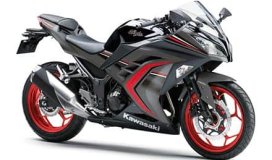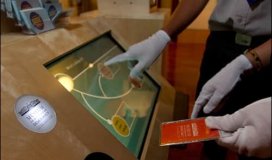STMicroelectronics has released its ST53G system-in-package (SiP). The solution consists of an integrated secure element (SE) and RF booster, in the same package, that can be built into wearable devices such as watches, fitness trackers, electronic handsets or toys, to make contactless payments secure. The SE is part of the company's ST31 family of 32-bit secure microcontroller units, using Near Field Communication NFC.
Already, electronic devices such as smart watches, smartphones and tablets are being equipped with NFC-enabled technology that can act as NFC readers and tags. However, says Christian Vignes, STMicroelectronics' banking and ID marketing director, only a small percentage of the several billion watches manufactured annually are smart watches. The others may have the capacity to benefit from NFC payment technology, however, by embedding similar technology in a credit card.
Because the system typically employs the power of a battery built into a wearable device to boost read range and speed, it could also work in any battery-powered consumer product. In addition, the solution can function without a battery, such as in a coffee mug or wristband, but at a shorter read range.
The ST53G is designed to enable NFC card emulation capability in wearables for single or dual contactless applications, the company reports. The module consists of ST's ST31G480 dual interface SE, which is compliant with the ISO 14443 standard, as well as a booster, to bring the read range up to 10 centimeters (3.9 inches), depending on the antenna's application and size.
Typically, the antenna can be very small, says Christian Vignes, the central marketing director of banking and ID for STMicroelectronics' Secure MCU Division. The ST53G module, with the SE and booster, is delivered in a 4-millimeter (0.2-inch) square format. The booster enables the device to accomplish that 10-centimeter read range reliably, the company explains, despite the small antenna size. Traditional contactless or NFC-enabled tags and cards typically have an antenna that leverages the product's entire space. In the case of wearables, companies lack the luxury of that much space.
During the past year or so, Vignes says, there has been growth in wearable devices, many of which would benefit from NFC technology, including—but not isolated to—watches. The ST53 is designed to also employ the power built into such a wearable device if it comes with its own battery or power supply. "With the battery," he states, "you are able to accomplish better performance, including the distance and speed of the read."
A wearable device can come with or without a battery. Payment applications can be added by embedding the ST31G480 MCU with the payment application. It can still be read, but with a short range that could require a reader be placed immediately next to the tag. With the ST53G using the booster and power from the device, on the other hand, companies can "increase the user experience—reading distance and volume—as well as secure transaction robustness," says Anne-Laure Sixou, from STMicroelectronics' central marketing division for communication market intelligence.
The technology will enable new use cases, STMicroelectronics predicts, since it will allow developers to create NFC-based wearable applications that previously were neither convenient nor affordable. "Practically speaking, the market is not established yet," Vignes says. The module, therefore, provides new opportunities for applications to be developed. "We are convinced that this type of integration will offer an opportunity to add functionality to wearables at a low cost."
That could mean makers of watches could create products that would allow consumers to pay for goods with a wave of their watch over an NFC-enabled point-of-sale device. The system could also enable solutions beyond payments. For instance, in the case of health care, an individual wearing a sensor could forward data to a health-care provider by waving his or her NFC-enabled phone near the device.
The ST53G SiP can be provided to companies along with a software developer's kit (SDK) so that they can create their own software or apps. In the case of payments, STMicroelectronics provides ST53G with an embedded operating system known as STPay-Boost. STPay is a read-to-use payment operating system that works with MF, MF DESFire and all major payment schemes, such as Visa, MasterCard and American Express.
The module samples are commercially available now and are expected to be in full production early next year. The new modules will be demonstrated at the Trustech secure microcontroller industry trade show, to be held next month in Cannes, France.



